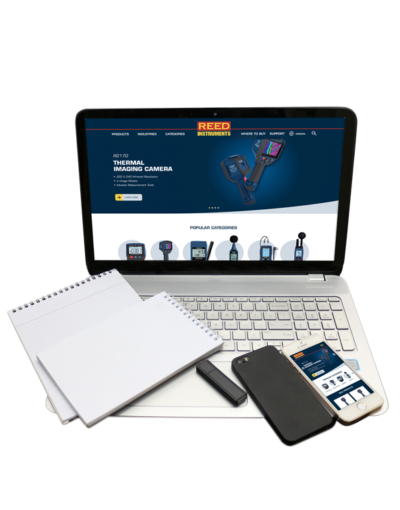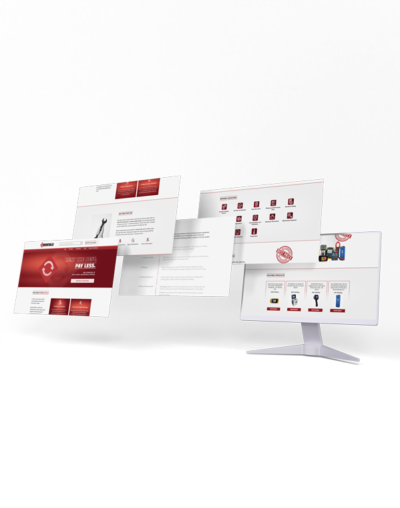Project Description
Case Study
Freshly Chopped
Freshly Chopped is a food service dedicated to delivering freshly picked meal boxes directly to customers’ homes. The service provides carefully selected recipes and ingredients tailored to individual preferences, making healthy and delicious cooking convenient and hassle-free. The app features a variety of recipes but lacks an integrated delivery system.

Type and Timeline
My team and I were tasked with redesigning an interaction in a client’s app during a three-week group project as part of the UX Design course at Concordia University in May 2024. This project was designed to help us develop our skills as UX designers by reinforcing the importance of business-driven product design. It also helped us build our professional skills by providing the opportunity to present our solutions and justify our design decisions in front of mock client stakeholders.
Responsibilities
In this project, our team collaborated to redesign an interaction within a client’s app, each member contributing their expertise to ensure a successful outcome. My specific responsibilities included creating the page layouts, developing wireframes, and building prototypes.
I focused on translating user needs and business goals into intuitive and functional design elements. By creating detailed wireframes, I established the structural foundation of the app, ensuring clarity and ease of use. I then transformed these wireframes into interactive prototypes, allowing for thorough testing and refinement. This hands-on approach not only enhanced my skills in UX design but also played a crucial role in aligning the final product with the client’s vision and requirements
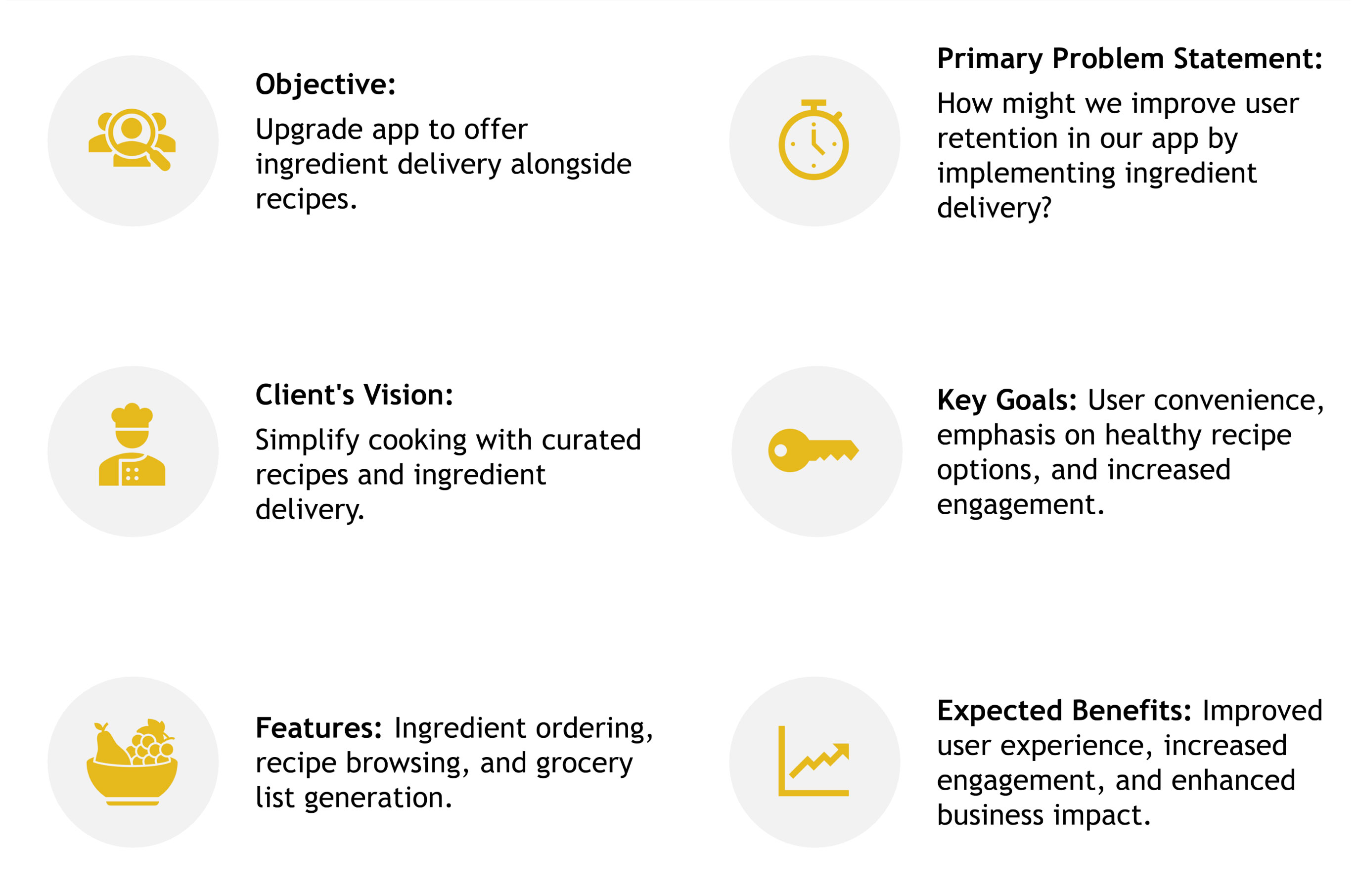
Problem
The goal is to expand and upgrade an existing app to include the Freshly Chopped service, allowing users to order ingredients for selected recipes directly through the app as well as to do grocery shopping without being tied to any recipe.
Currently, the app only allows users to browse and filter recipes but lacks an integrated delivery system. Additionally, the app has an issue with retaining return users, as it does not offer the convenience of ingredient delivery. This enhancement will enable users not only to discover new recipes but also to conveniently order all necessary ingredients for home delivery, addressing the inconvenience of finding and purchasing ingredients separately.
Proposed Enhancements
Design Considerations

Research Findings

Statistics
The food delivery app market in Canada has seen significant growth in recent years. According to Statista, the revenue in the online food delivery segment is projected to reach CAD 5.8 billion in 2024, with an annual growth rate (CAGR 2024-2028) of 10.5%.
Furthermore, a survey by the Angus Reid Institute indicates that 29% of Canadians use food delivery apps on a weekly basis. The convenience and efficiency offered by these apps have driven their widespread adoption, particularly among younger demographics, with 45% of users aged 18-34.
Additionally, reports suggest that 60% of users prioritize apps that offer a wide range of meal options and reliable delivery services. These statistics underscore the potential for Freshly Chopped to capture a significant share of the market by integrating a robust ingredient delivery service into its app.
Competitor Research
In the competitive landscape of food delivery apps in Canada, several key players dominate the market, including Uber Eats, SkipTheDishes, and DoorDash. These platforms offer extensive restaurant networks and user-friendly interfaces, setting a high standard for convenience and service quality. Uber Eats and DoorDash have particularly excelled by providing diverse menu options, real-time tracking, and flexible delivery schedules.
However, a gap exists in the market for services that combine meal planning with ingredient delivery, as offered by HelloFresh and GoodFood, which focus primarily on meal kits but lack the flexibility for users to choose individual ingredients or grocery items. This presents an opportunity for Freshly Chopped to differentiate itself by offering a hybrid model that merges the strengths of traditional food delivery apps with the personalized meal kit approach, providing both recipe-based and grocery shopping options within a single platform.
Further Research
To address this, we conducted further research to gain insight into user preferences and expectations regarding ingredient delivery. This included a SWOT analysis and a competitive analysis of similar services such as Hello Fresh, Doordash, and Instacart. Our aim was to understand what works well for these competitors and what doesn’t, as well as to identify any gaps in the market that Freshly Chopped could potentially fill.
Our research showed that the majority of users prefer simple design and functionality. Users often feel frustrated when they are unintentionally redirected to different parts of the app or if the navigation isn’t simple to follow. This information was then confirmed by the participants of our semi-structured interviews. This research allowed us then to create a persona, representing one type of user who would benefit from the delivery service. By understanding users’ pain points, preferences, and expectations, we aimed to tailor the delivery service to meet their needs effectively.
Persona
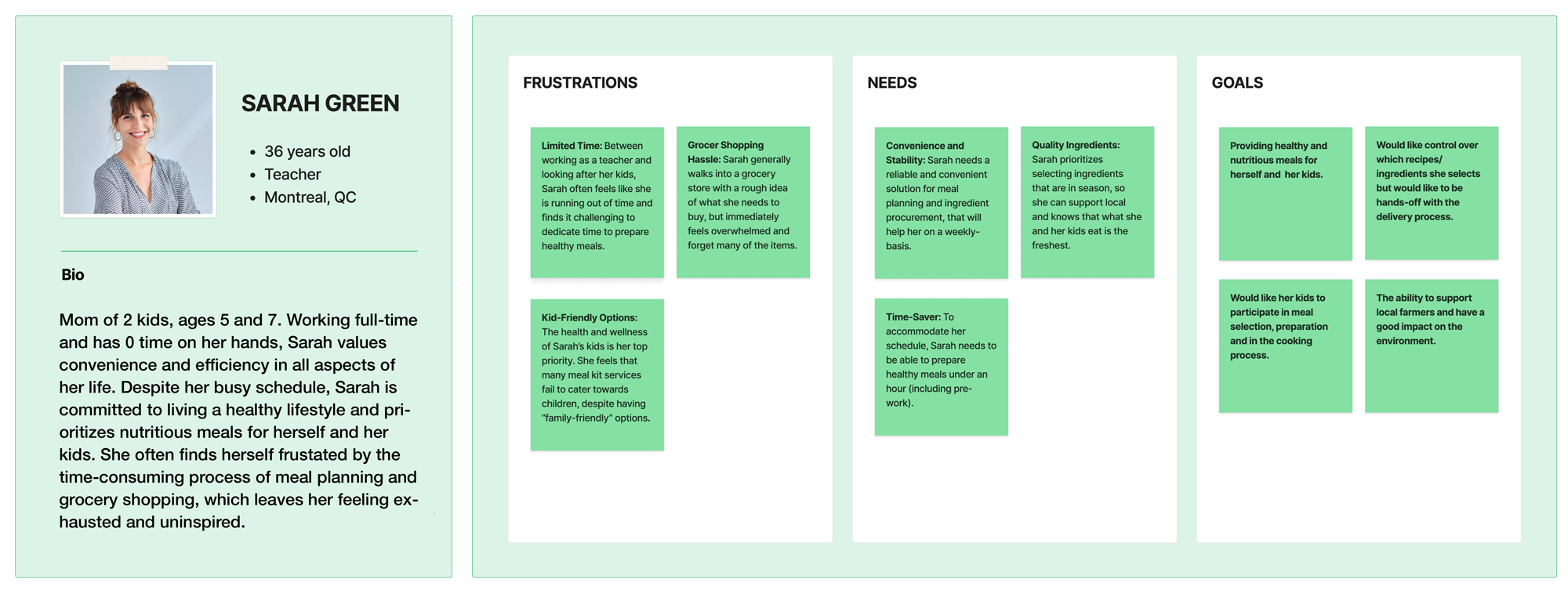
Ideation
To address the identified problems, we initiated the ideation phase, focusing on creating a solution that integrates the Freshly Chopped service into our app. To better understand the user journey, we created a storyboard illustrating our persona, Sarah Green, a busy mom of two.
Sarah often comes home from work tired and frustrated to find her fridge empty, making it challenging to prepare a healthy meal for her family. The storyboard highlights her new routine using the Freshly Chopped service. It starts with Sarah browsing through the app with her kids, planning meals for the week, and noting their recipe choices on a calendar. She places an order for the necessary ingredients through the app and schedules the delivery for the next day. The next day, a Freshly Chopped box is delivered, containing pre-portioned ingredients that make it easy for Sarah and her kids to cook together, resulting in a healthy dinner and quality family time.
This visual representation of Sarah’s experience helped us identify pain points and opportunities for improvement in the user flow. We combined the best elements from our initial wireframes into a unified low-fidelity version, which we later upgraded to a mid-fidelity wireframe. At this stage, we focused on refining the user flow, ensuring a seamless and straightforward process from recipe selection to ingredient delivery. This collaborative and iterative approach ensured that each aspect of the app was designed to meet the needs of our target users effectively.
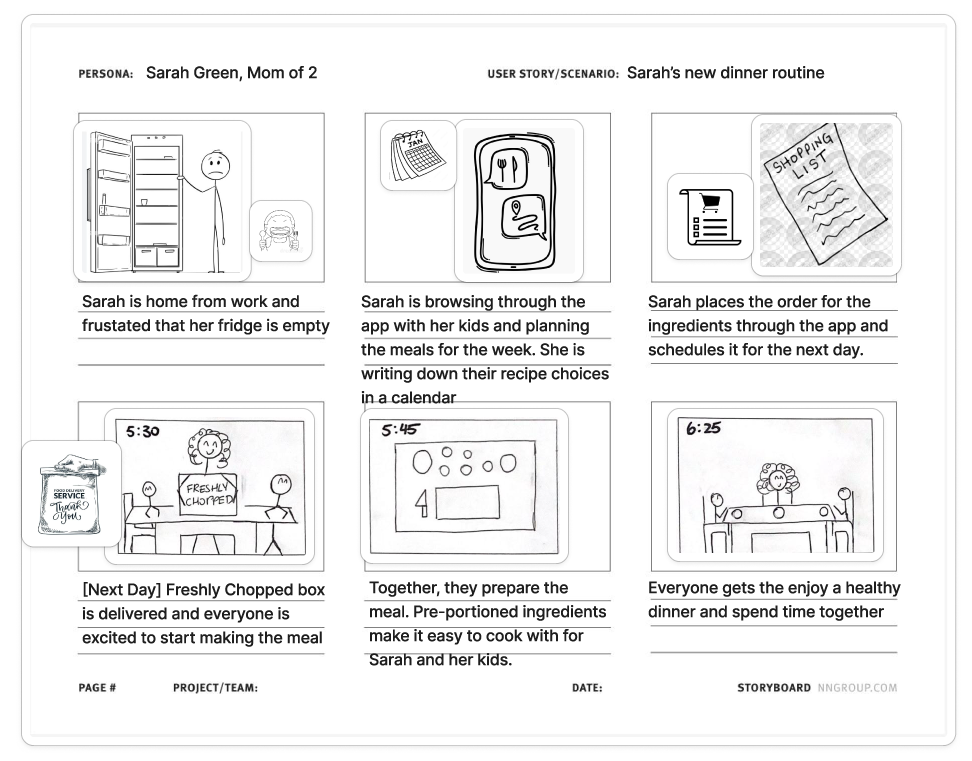
Low-Fi Wireframe
Lessons Learned
Throughout this project, we gained valuable insights into the importance of user-centered design and iterative testing. One of the key lessons learned was the significance of continuous user feedback in shaping the design to meet real user needs. By engaging with users early and often, we were able to identify pain points and refine our solutions accordingly. Additionally, we learned the importance of balancing business goals with user experience, ensuring that our design decisions supported both user satisfaction and business objectives.
Collaboration played a crucial role in the project’s success. Working closely with team members allowed us to leverage diverse perspectives and expertise, resulting in a more robust and well-rounded final product. Finally, this project reinforced the value of detailed planning and organization, as breaking the project into manageable tasks and adhering to a structured workflow enabled us to deliver a high-quality design within the given timeframe.
Final Design and Outcomes
The final design of the Freshly Chopped app successfully integrates the Freshly Dropped service, enabling users to order ingredients for selected recipes directly through the app as well as shop for groceries without being tied to any specific recipe. Our approach focused on creating an intuitive and user-friendly interface that simplifies the process of discovering recipes, ordering ingredients, and scheduling deliveries.
Key features of the redesigned app include a streamlined browsing and filtering system for recipes, an integrated delivery system for ingredients, and a grocery shopping option. The user flow was carefully refined to ensure that users could effortlessly switch between discovering new recipes and ordering ingredients. We also updated the navigation bar by increasing the contrast ratio and adding “cart” and “shopping list” icons, enhancing usability and ensuring essential functions are easily accessible. This comprehensive design not only addresses the issue of retaining return users but also enhances the overall user experience by offering convenience and flexibility.








